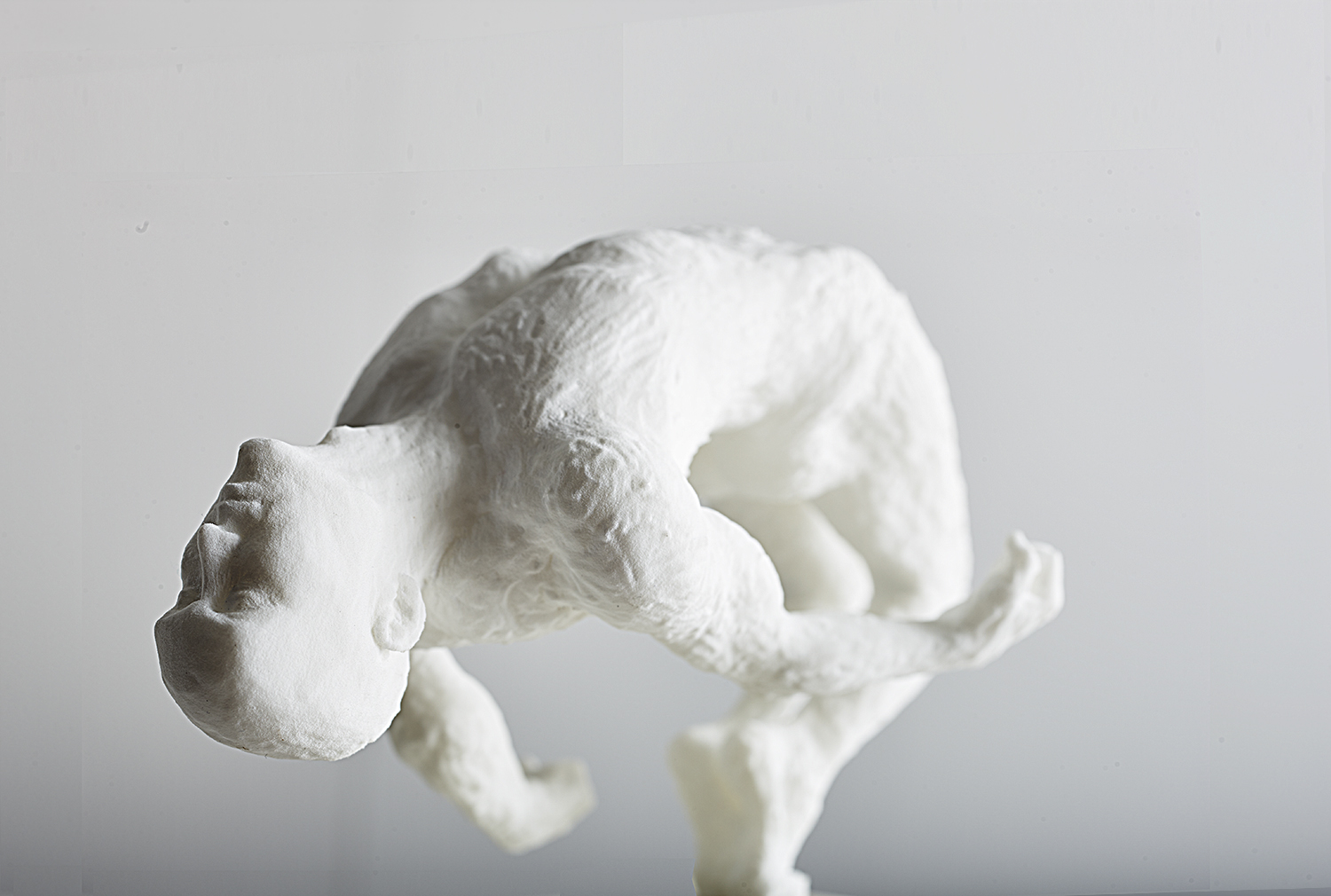RESURRECTION OF HUMAN KINDNESS
Benjamin Collard's figurative embodiment of human kindness is poised between the two opposing forces of RESURRECTION and COLLAPSE. In presenting human kindness as both confrontational and masculine, this sculpture is intended to contradict the "standard model" definition of human kindness. Within this contradiction, “resurrection of human kindness” compels us to empathise with the value of fighting to overcome the impossible and suggests that human kindness is augmented by confrontation with all that it must overcome.


THE MEDIUM
Collard's graduation from digital to sculptural work was a “long game manoeuvre” toward a medium, in which, he remains confident of finding his greatest potential. After more than 14 years of balancing both conceptual and observational subjects within a digital medium, this back burner intention of progressing to sculpture remained steadfast. In the summer of 2014 during his weekends working in the pastry section at Granger Notting Hill, he finally decided upon his first sculptural medium. Macerating broken shards of honeycomb through huge bowls of softened butter, Collard realised that this wonderfully malleable, easily tempered and transient substance could perfectly marry and contrast the permanence, sincerity and solidity of the bronze cast. Fuelled with incentive from Franz West’s Roman Room series, visiting David Breuer Wiel’s public sculptures and Rodin’s works in the Courtauld Gallery, Collard began to imagine working with a medium that would yield to the lightest fingering and remember the touch of every action. With the hope of capturing something of the loose and playful malleability of butter within the permanence and sincerity of bronze, Collard decided that his first sculpture would be moulded in butter and cast in bronze.
THE MEANS
Prior to exhibiting his work, all of Collard’s creative endeavours were self-funded through part time employment. For the past 5 years he has divided his week into two halves, three days in the kitchen to fund three days at the studio with one remaining day each week to recuperate. Throughout most of his years of duelling occupations in London, this part time self-funding denied Collard enough studio space to play on the scale that he desired. Therefore, after moving to Lymington, Hampshire he set about finding a studio that would be suitable to sculpt on the scale demanded by a messy and unusual medium. In May 2015 Collard outlined his intentions to the proprietor of Factory Studios Bournemouth and took a space where, with some deliberation over method, he eventually began to sketch out the concept for a sculpture in butter. Arriving at a successful method of sculpting at a scale of 3 x human proportions in a medium soft enough to squeeze through the fingers of a clenched fist was neither quick or simple. However, after the inevitable fails, tests and trials, Collard designed and assembled an accurately scaled skeleton/armature and connected freezer unit, through which liquid coolant circulated. This cooled skeleton/armature would support and cool the 200kg of butter used in the subsequent creation of his first butter sculpture.
THE CONCEPT
Starting with a rough conceptual outline of a man at the brink of collapse, Collard first began to consider the possibility of sculpting a work that aimed to convey the importance/necessity of getting back up from a beating. The process of exploring this initial concept drove the beginnings of this sculpture into existence. However, having shaped a rough estimation of this resurrection from adversity, the resulting form was lacking in both anatomical and emotional clarity. The question that motivated conceptual enrichment of this work was simple:
What was both cause of, and remedy to, the extreme adversity that collard had such a burning compulsion to depict in this sculpture?
This breakthrough question arose during Collard’s weekend employment in a local restaurant, where an all too familiar situation was unfolding. A handsome and kind natured young server was being repeatedly bullied by a couple of foul mouthed chefs. Threatened by the young boy’s good looks and physical prowess, the bitter, unhealthy and malicious old chefs berated this new employee into a position of subservient acceptance for this ongoing abuse. Instead of confronting this offensive behaviour, the young server was allowing this behaviour to continue by repeatedly returning his colleagues’ taunts with quiet, polite and courteous subservience. Collard conjectured that this kind natured boy needed to find the strength to stand up for himself and confront his aggressors. In his empathy for this young server Collard saw how his own aversion to confrontation had been the cause for much of the adversity in his own life. In presenting human kindness as masculine, muscular, beaten but not defeated, Collard suggests that great strength and confrontation are conditional to men who take up the mantle of choosing human kindness.
